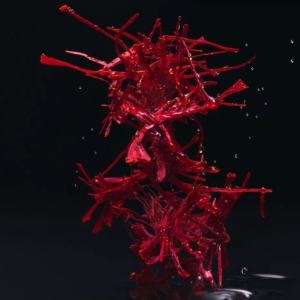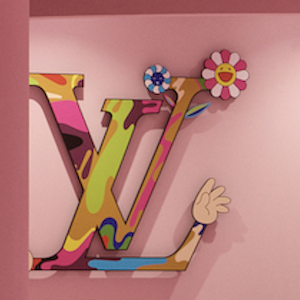Endlessly Alluring
By Charlene Pepiot
In the first weeks of spring, the tulip blooms and festivals around the globe celebrate the colourful bulb. Can you blame them? The tulip’s spring entrance is a symbol of rebirth after the frosty void of winter. It also fills the symbolic void by representing perfect love as well. Our love for the tulip throughout the ages, though, hasn’t always been perfect. Would you believe that this cheerful flower has caused the ruin of many throughout its long history? Read more in Endlessly Alluring to find out how!
Left hand image by Todd MacDonald from Pixabay

The tulip has been a prized flower for centuries. As early as 1000 AD, tulips were being cultivated by the Turks and were a key part of Turkish culture. Seen as a symbol of power and wealth, Ottoman sultans would wear a tulip on their turbans. Interestingly, the meaning behind the word ‘tulip’ is derived from the Turkish word for turban, ‘tulipan’ due to the similar look of both flower and headwear. The tulip was so valued in fact, that buying or selling the plant outside of the capital could even lead to exile.
Once introduced to Europe and especially the Netherlands in the late 16th century, the tulip was used for medicinal purposes, though its variety of colour and exoticness soon steered the tulip to be a decorative flower in gardens.
The wealthy adorned their gardens with rare tulips as a symbol of status and even had portraits done of children holding the sought-after flower. The tulip was more than just a pretty splash of colour in a garden. It was a symbol of prestige, especially among the Dutch. In what has been dubbed ‘tulipmania,’ prices soared as the Dutch elites paid outrageous amounts for bulbs.
The mania reached its height in 1637 when some tulips went for thousands of guilders per bulb. The highest recorded price for a tulip was 10,000 guilders. Back then, that money could buy a magnificent house in the most lavish district of Amsterdam.

Image by anncapictures Pixabay
Of course, this inflation could not be sustained, and when the bubble burst and prices crashed, many were left penniless.
Though the tulip has led some into exile and others to ruin, it remains a symbol of perfect love, with specific colours having different meanings attached. Red symbolises everlasting love while pink symbolizes happiness and confidence. Yellow alludes to cheerful thoughts while white is forgiveness and purple is royalty. Tulips symbolize positive feelings, which makes the suffering the plant has indirectly caused rather tragic.
The beauty of tulips has also been a weakness for the plant itself. Those aforementioned rare varieties of tulips the Dutch clamoured over during tulipmania were not just rare, but diseased. While tulips are usually a solid colour, if the plant contracts the tulip-breaking virus, it can grow with different petal patterns resulting in stripes, streaks, bars, or flame-like effects. This is due to the infection altering the bulb and causing it to “break” its predisposed colour.
Gorgeous though they are, these unique designs come at the cost of longevity, and the virus weakens the plant over time until it cannot flower and withers away. Some of the most beautiful varieties of the tulip–such as the now-extinct Semper Augustus that sported dark red streaks on white petals–were the result of this virus. Now such varieties can only be admired through old paintings of an artist’s interpretation of what used to be.
Thankfully, with today’s technology, we do not have to rely on interpretation and can view real photographs of flowers, such as those in the exhibit Flowers by Richard Learoyd and Irving Penn. The exhibit showcases both artists’ unique styles of traditional and contemporary with unusual angles and unexpected focal points to draw attention to aspects of flowers one may not have considered before.
Yet beauty is not the only quality the tulip is admired for. Though tulipmania focused solely on the tulips’ looks, the plant has surprising medicinal power as well. Its rich organic acids boast strong antioxidant and antimicrobial properties to reduce the appearance of ageing. Compared to the rose, tulips also contain twice as many organic acids and 4.5 times as many fatty acids.
The company Bloomeffects has harnessed the tulips’ restorative and hydrating powers in their collection of Royal Tulip skin care products. Each item is crafted with the Bloomeffects Proprietary Dutch Tulip Complex, which is rich in antioxidants, natural moisturising factors, and amino acids that hydrate skin and make it softer and smoother to the touch. It also contains skin-protective properties and a healthy dose of amino acids to help heal your skin and build its density.
Bloomeffect’s Royal Tulip Nectar is a unique ointment-to-serum that repairs the skin’s barrier while soothing and nourishing it. Earth-sourced ingredients like White Horehound Plant, Rumex Plant Extract, Vitamin C and Hyaluronic Acid help boost your skin’s natural enzymes to protect against environmental stressors as well as prevent discolouration and uneven tone.

The Royal Tulip Cleansing Jelly actively dissolves oil and traces of makeup without stripping the skin while hydrating it. This leaves your skin feeling smooth and never tight.

The Dutch Dirt Mask is a pore-purging powerhouse mask that utilizes natural botanical extracts such as Flower Acid, Prickly Pear Enzyme, and of course the Bloomeffect’s Proprietary Dutch Tulip Complex. These ingredients help to detox, purify and hydrate your skin.

The Tulip Tint Lip & Cheek Balm adds a natural and healthy flush to the lips in a petal-pink shade that works with any skin type. The balm can be dabbed on the skin for a tint or layered to create a bolder colour payoff.

The tulip is truly unique in how its beauty has caused both adoration and pain to the plant and its admirers across time. Through it all, the tulip fills the symbolic void by being the flower of love and rebirth, and its revitalizing properties can offer similar effects to those who stop and take the time to smell the tulips.
Learn more about Bloomeffect’s Royal Tulip line on their website here
More information on the Flower exhibit can be found in its press release here
If you enjoyed reading Endlessly Alluring then why not read 2 + 1 = Bleu 3 Here
.Cent Magazine, London. Be Inspired; Get Involved.





